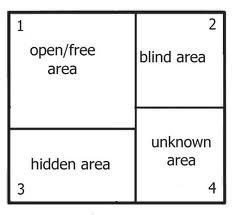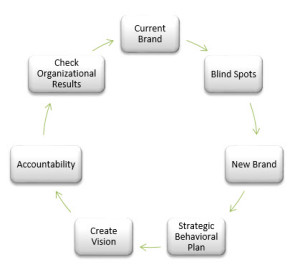Power of Authentic Leadership: Transparency in Today’s Workplace
We hear a lot about authentic leadership in the world of developing leaders for your organization. I have to laugh when I hear that because what is the opposite of authentic? The opposite as far as I can find is from not authentic, false, fake, mock, synthetic or the worst I can find is fraudulent. Please tell me why anyone would spend one minute in any of those categories when leading people? Remember getting your first position of leadership and asking yourself, “What type of leader do I want to be?” Thinking back, did you even reflect and thoughtfully craft your leadership brand?
Actually the term authentic leadership and the theory behind it came about during the time when leaders were facing difficult times. Bruce Aviolio and William L. Gardner cited challenges like terrorism, ethical meltdowns and SARS. Those were real issues with global impact. The theory came about when what worked then doesn’t work now. You know the mother of invention is not for the fun of it but for reasons that we need to try something else to get something else to happen. You might even call it desperation. This concept is from about the same time as positive psychology, and studies not only how to be happy, but what is the return on investment of being happier. At that time we realized that corporations could tank and seemingly disappear overnight. Employees and shareholders demanded to know more about the leadership and the real story. The rebuilding that was need was not going to happen without a few honest discussions and rebuilding trust by exposing the inner-workings of the boardroom.
How to rebuild trust through authentic leadership with intention:
- Get a solid grip on your current leadership brand. What message about you are you currently sending? What is your “street cred?” You would not change your product marketing strategy without first understanding the existing environment including positives and deficits of that product. The same is true with human behavior. This step is to objectively identify your presentation. Being as truthful with yourself as possible, you will need to take this step to get to the next step.The outcome will help you identify your values and your intentions as a leader and the “why” of what you are building as a leader. Give yourself a week to really watch this. Notice your intentions before meetings, interactions, facing challenges or difficult conversations. What is important to you? Write it down. If you are stuck, identify characteristics of 3 leaders you know and admire. Write their characteristics down. Pull the top three characteristics that you know describe your current state. Self-integrity here is crucial. This is where you open your kimono privately until you are fairly sure you can take the next step.
- Gain awareness of your blind spot. Get your HR team to help you set up assessments like a 360 feedback tool, take the MBTI, Strengths, Crucial Conversations assessment identifying your style under pressure and any others that your team suggests. Take what they offer or invest in your own success. Here, the Johari window, a four square matrix where all behaviors fit, might apply. When Joe Luft and Harry Ingham were researching human personality at the University of California in the 1950’s, they found that the area that trips us up is the second box. Find out what others see that you do not see. Use the data from the assessments but remember these are simply data points. Every day you get to wake up and decide who you are going to be today. Commit to give this step some power.

Johari Window – Identify your blind spots and own them.Box 1 – What I know about me and what you know about me
Box 2 – What you know about me but I don’t see about me
Box 3 – What I know about me but I don’t want you to know about me
Box 4 – Neither you nor I know these behaviors (like assumptions I make) and you don’t know or see and they are not conscious to me and they may not be different from yoursThis is time to be grown up. Take the assessments they offer but also invest in your success. Open that wallet and shrink the blind spot. - Craft your new brand. This step is where you take the information from step one and add those characteristics from step two that you want to keep. Combine them into the leader you would be proud to be now, and more importantly what consider the ideal words used to describe your leadership legacy. Create an easy statement to bring you back to the behaviors you want to emulate. For example, mine is “I build relationships so that creative innovation and change can happen.” This should be no more than two sentences. Two sentences that you can say by taking only one breath. You must make it short but extremely meaningful to you. This is the guiding statement to reference when you make decisions as a leader for your team or your organization. When you use this branding statement you know you are deeply inside your wheel house. More importantly this will help you make the best decision possible.
 Design a vision that aligns your authentic leadership brand with the purpose of the organization, and uniquely describes your intentions for that organization. What do you want to see happen while you are there? What do you want to happen long after your departure? Remember the brand is like the mission, the vision is where you are going. The vision is also a short phrase. While your company or enterprise has a vision, this vision is more local. It refers to your intentions as a leader. Just like your brand is who you are, your vision is where you are taking the responsibility of your role as a leader. Take time for this step as it is the foundation for all actions going forward. Challenges are more thoroughly addressed from a foundation that is well grounded in your true self and your desires for the organization.
Design a vision that aligns your authentic leadership brand with the purpose of the organization, and uniquely describes your intentions for that organization. What do you want to see happen while you are there? What do you want to happen long after your departure? Remember the brand is like the mission, the vision is where you are going. The vision is also a short phrase. While your company or enterprise has a vision, this vision is more local. It refers to your intentions as a leader. Just like your brand is who you are, your vision is where you are taking the responsibility of your role as a leader. Take time for this step as it is the foundation for all actions going forward. Challenges are more thoroughly addressed from a foundation that is well grounded in your true self and your desires for the organization.- Strategically plan the action of transformation into that authentic powerful leader you have just designed. Where are you today? Where you want to be? What steps will it take to get there? This should sound like a roadmap which you have done for so many different products or projects in your career. Now this one is you. This one is behavioral. This one has a communication plan to engage those with your new and improved leadership style. This does not need to be a broad announcement. Behavioral changes need to solidify your chosen authentic leadership brand. Identify the steps and lay them out like you would any other project. Reconnect with the “why” of what you are doing to change. Once you have secured your commitment and the previous statements fit, you are ready to act. When you run into trouble or slip back into old behaviors, step back and reflect. Ask yourself what is the benefit of staying the same versus the change? There is always a benefit to behavior that is repeated. Unpack that and then you can pinpoint the part that stops you. Be brave. Remind yourself of times you had success in changing behaviors previously. Leverage that power of experience now.
- Enlist accountability partners who know your roadmap aka action plan and will be authentic with you when you revert back to old ways. New behavioral change must supported by those around you. They do not need to know all the details – just give them some of your intentions and ask them to watch for confounding statements or actions. The person or persons need to be trusted by you and trustworthy with your plan. More importantly, they must be honest enough to tell you that your brand is slipping. Make sure you give them permission to be honest, and create a structure for feedback so they will be reminded to watch for that behavior. This might include people from different areas in your life. When you are committed (and comfortable having tried a few things) then go really public. If you are in a position to engage others in their own commitment to authentic leadership then you will really have the support to make a cultural change in the organization. This could be a two-step process depending on how courageous this step feels for you. Bring your team through this process and then encourage them to take their teams through this process.
- Check on what is happening with your business. With any investment of effort and time, you want to know it is working. In organizational change, key performance indicators check the return on investment. Select important indicators then benchmark KPI values like retention, market share, innovative ideas brought forward, efficiency of meetings or your general happiness factor. Indicators to watch could include productivity, errors, safety or absenteeism. Select a day six months down the road to check those KPIs. Are the results as strong as you would like? If so, visit step one to ensure you are on track. If not then visit step one to see what you missed. It could be that your accountability partners are not the right ones to call you out on behaviors that do not bring your best leadership forward. Consider doing the deep version of this process annually or bi-annually to really commit to authentic leadership. Do not bother if you are only going to do this once. Put it in the calendar!
Contact Us Today if You Think You Need Coaching through Becoming a More Authentic Leader
If you find yourself troubled with establishing more authentic leadership skills in the work place and need the right guidance and coaching to make great choices, call or email Pat Weiland, Executive Coach and President of Sage Strategies. info@sage4change.com +1 310-503-5856Avolio, B. J. & Gardner, W. L. (2005) Authentic leadership development: Getting to the root of positive forms of leadership. The Leadership Quarterly, 16, 315-338. Retrieved from http://www.keyleadership.com/Downloads/Authentic%20Leadership%20Development%20.pdf
Cooper, C. D., Scandura, T. A. & Schriesheim, C. A. (2005) Looking forward but learning from our past: Potential challenges to developing authentic leadership theory and authentic. The Leadership Quarterly, 16, 475-493. Retrieved from http://www.ilo.bwl.uni-muenchen.de/download/unterlagen-ws12_13/leadership_and_learning/literature_hoegl1/cooper-et-al_2005.pdf
Patterson, K., Grenny, J., McMillan, R., & Switzler, A. (2002) Crucial Conversations: Tools for talking when the stakes are high. New York: McGraw-Hill.
Rath, T & Conchie, B. (2009) Strengths Based Leadership 2.0. New York, NY: Gallup Press.
